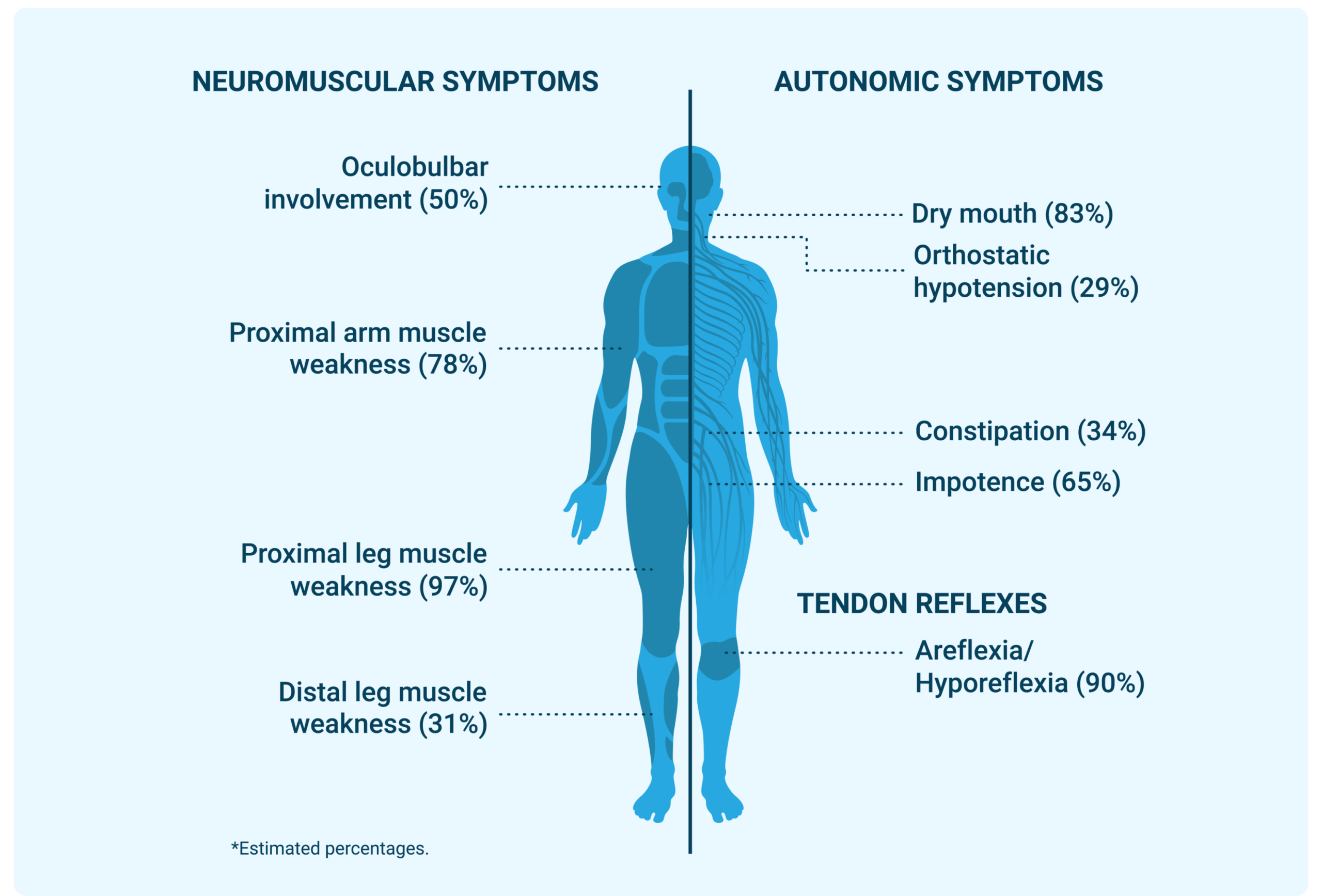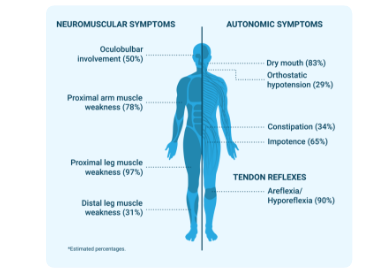Diagnosing LEMS
Early recognition of LEMS signs and symptoms can lead to quicker diagnosis and initiation of effective treatment12
Common LEMS Signs and Symptoms12*


LEMS POP QUIZ
All of the following are characteristic symptoms of LEMS except:
Weight loss/loss of appetite is not a characteristic symptom of LEMS. The disease is characterized by proximal muscle weakness, autonomic symptoms, and hyporeflexia or areflexia.12
Proximal leg and hip girdle weakness can create a specific LEMS gait
LEMS typically starts with muscle weakness in the upper legs and hips, including the pelvic girdle.12 As symptoms spread and worsen, the patient’s gait is affected, making walking difficult and unsteady.5,6 In some cases, this weakness leads to a specific waddling motion, commonly referred to as “LEMS gait.”
Diagnostic methods
If you suspect that your patient may have LEMS, you can utilize several clinical diagnostic methods to get them on the right treatment path.12
SIGNS AND SYMPTOMS
ANTIBODY AND ELECTRODIAGNOSTIC TESTING MAY CONFIRM A LEMS DIAGNOSIS
Uncovering hidden cancer: another benefit of early recognition and diagnosis of LEMS5,12
The sooner LEMS is identified as the disorder behind your patients’ symptoms, the sooner treatment can begin. Treatment for LEMS will be predicated on how the disorder is manifested.16
Manifestations of LEMS
LEMS can manifest in association with cancer16 or in the absence of cancer.12,21
*Results from a study involving 133 patients with cancer-associated LEMS.According to the National Comprehensive Cancer Network Guidelines® in Oncology (NCCN Guidelines®), consultation with a neurologist for a diagnostic workup is recommended in those with a suspected paraneoplastic syndrome (PNS).24
LEMS Pop Quiz
LEMS is most often associated with which type of cancer? (please select one)
Although LEMS occurs with several different cancer types, it is most often associated with small cell lung cancer.16,22
